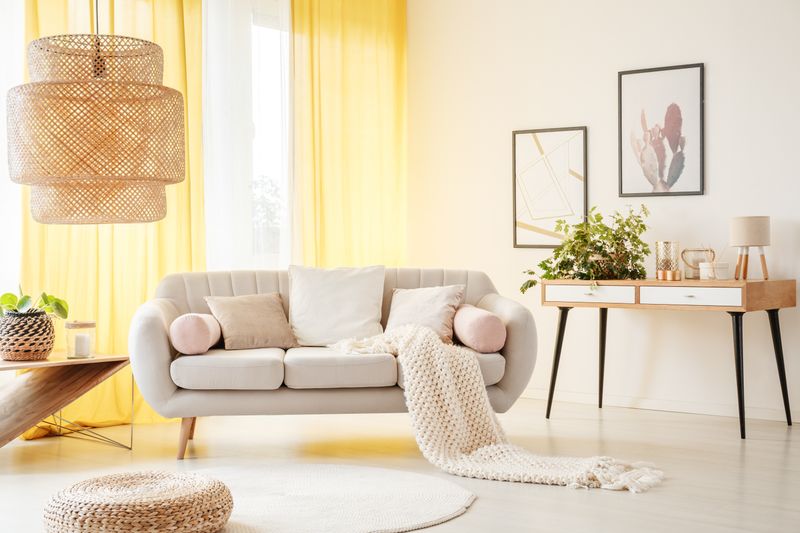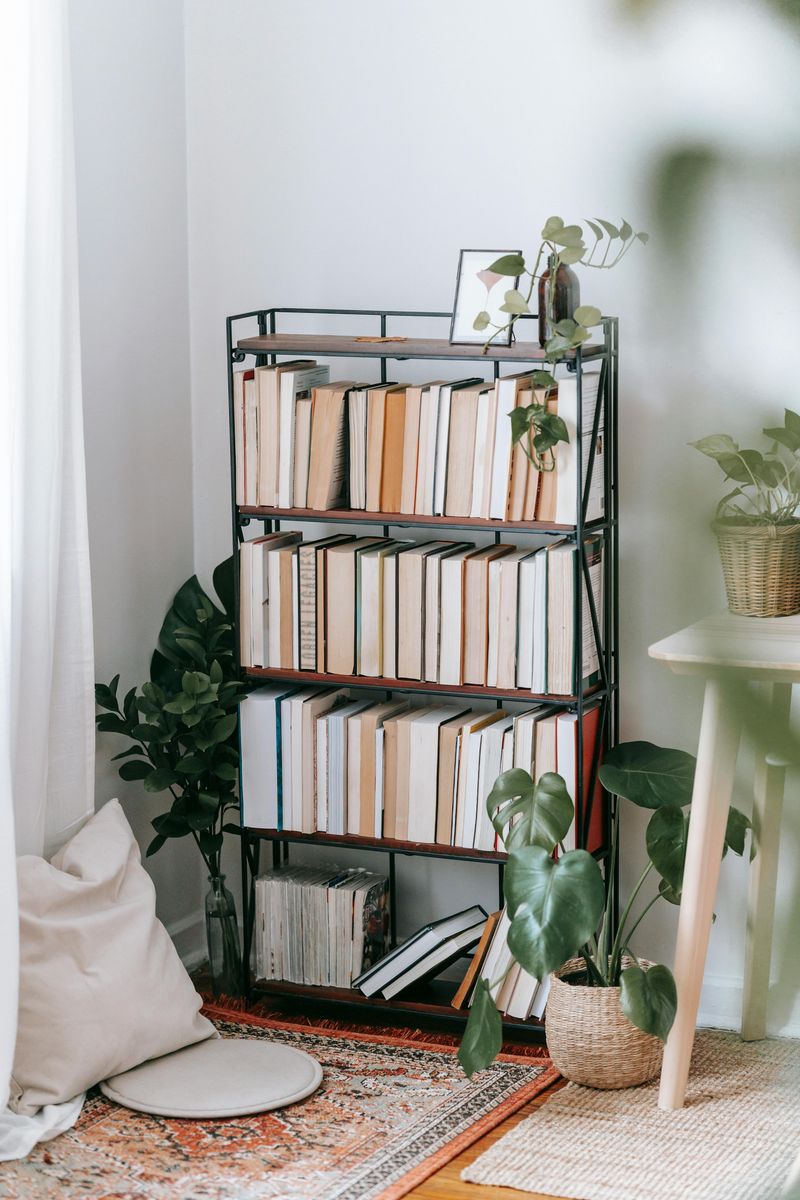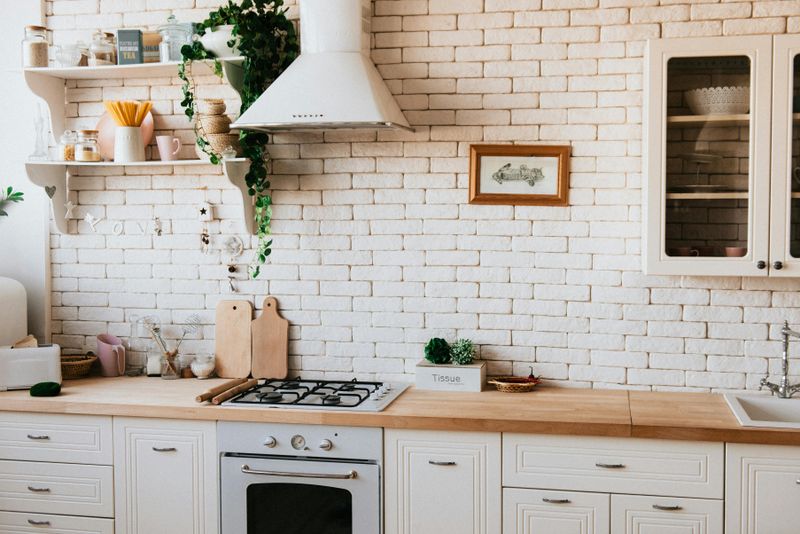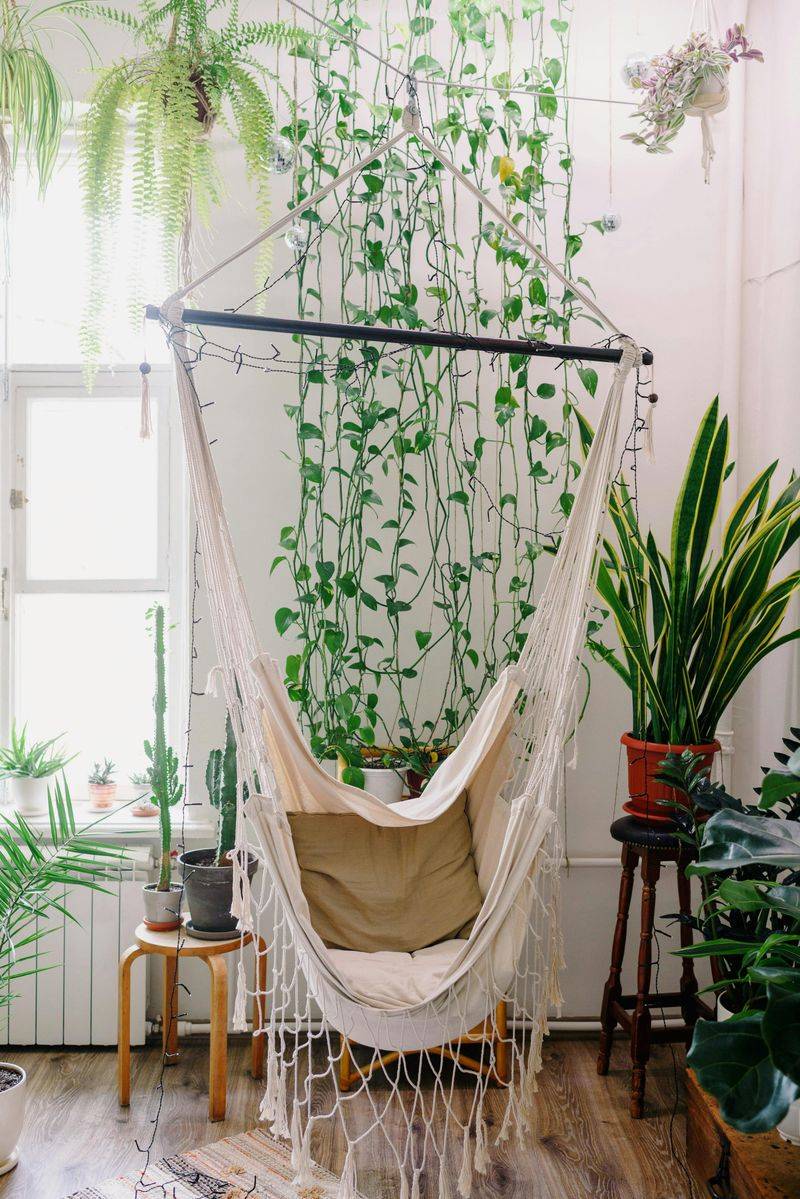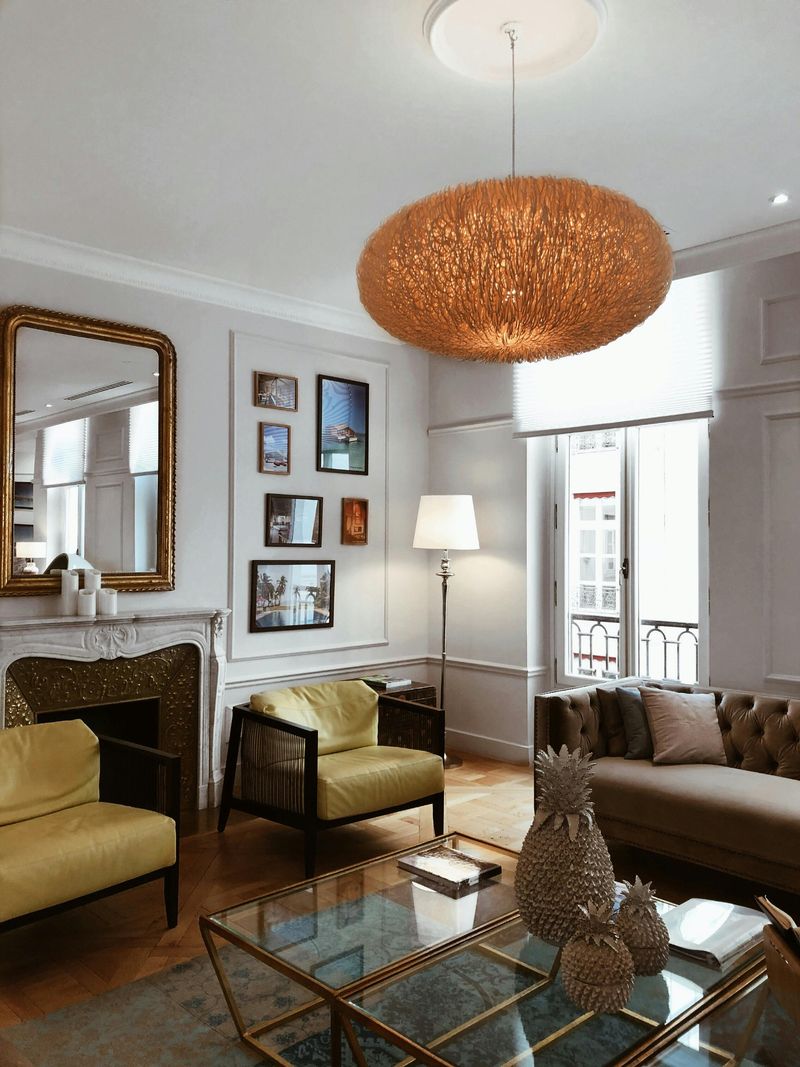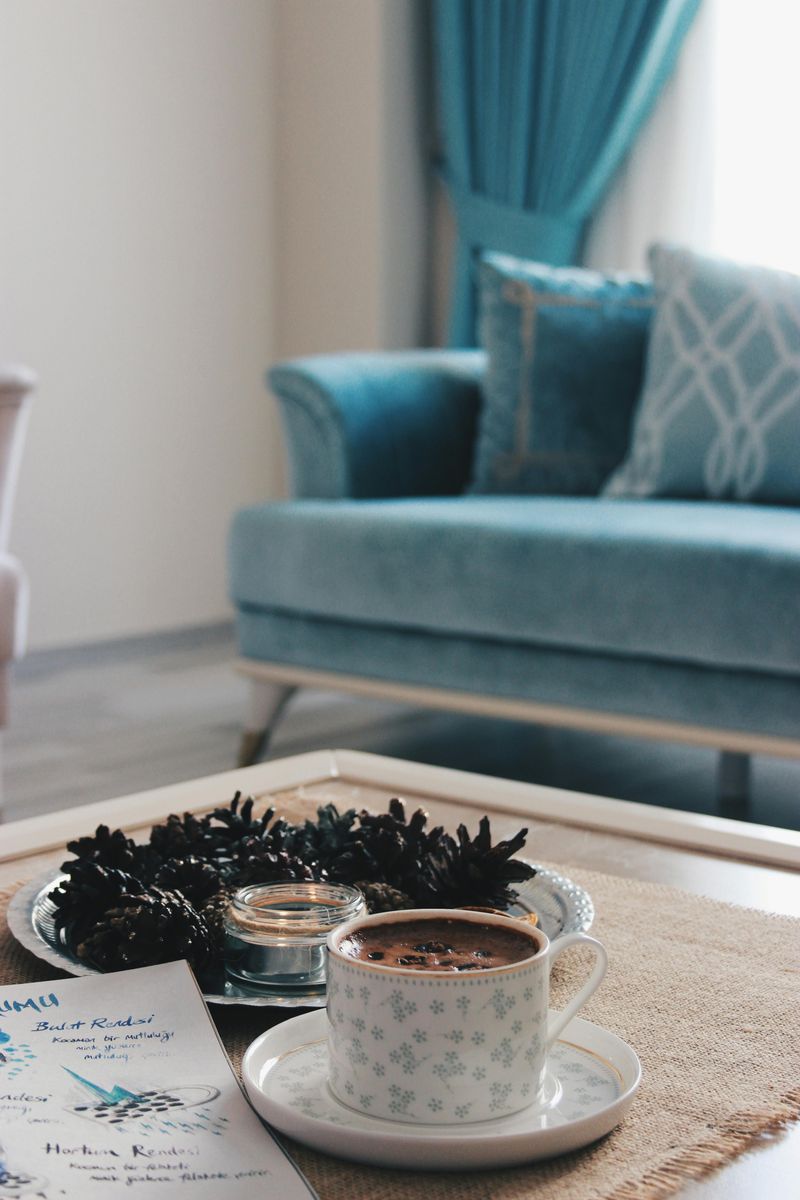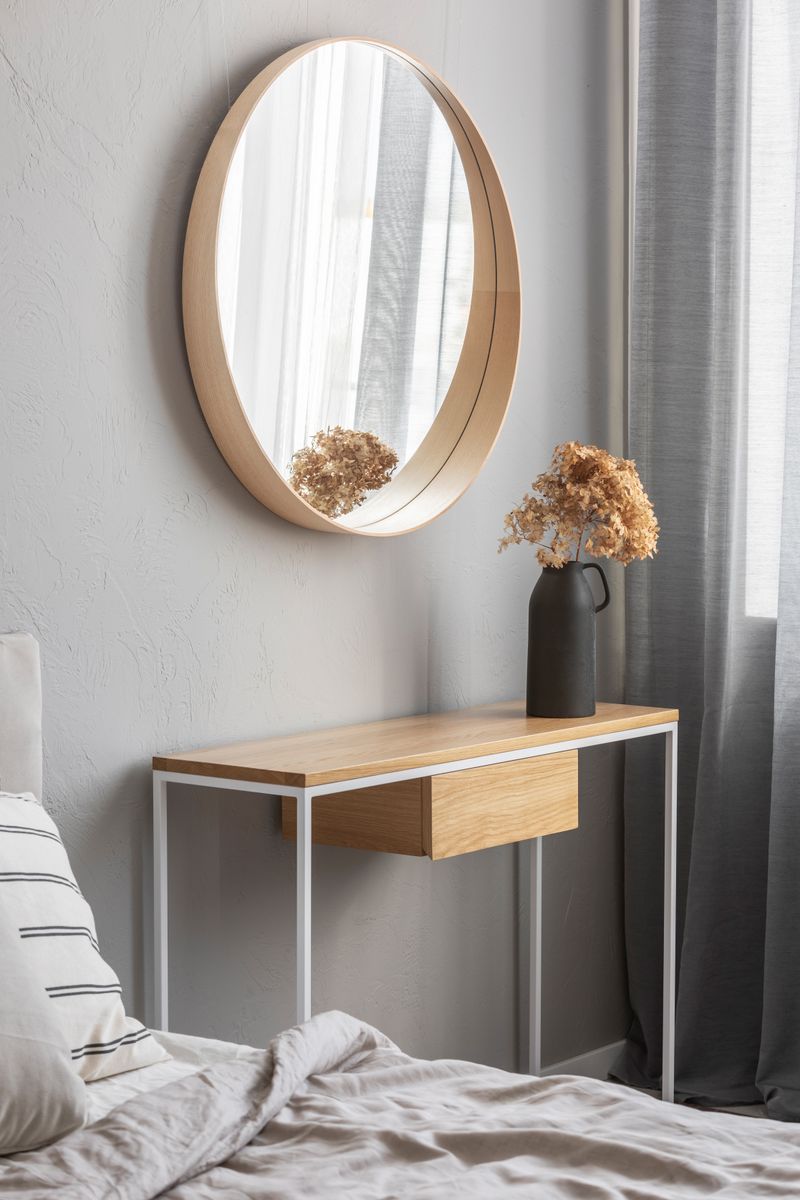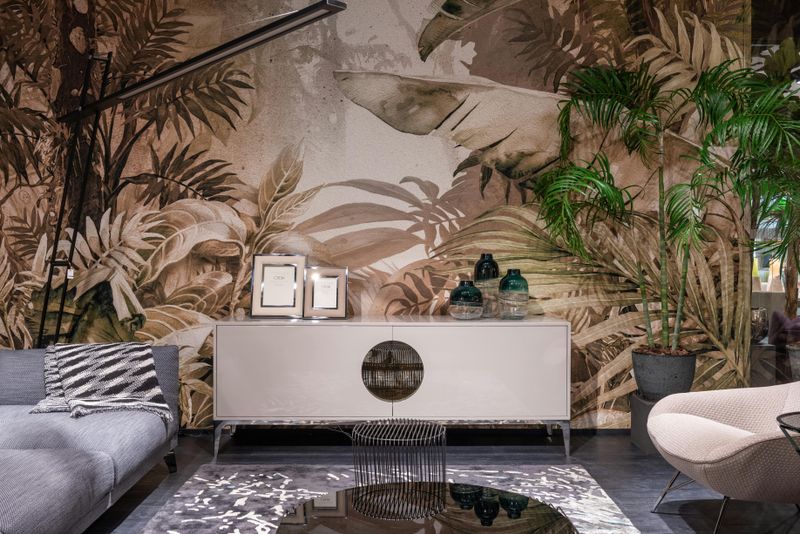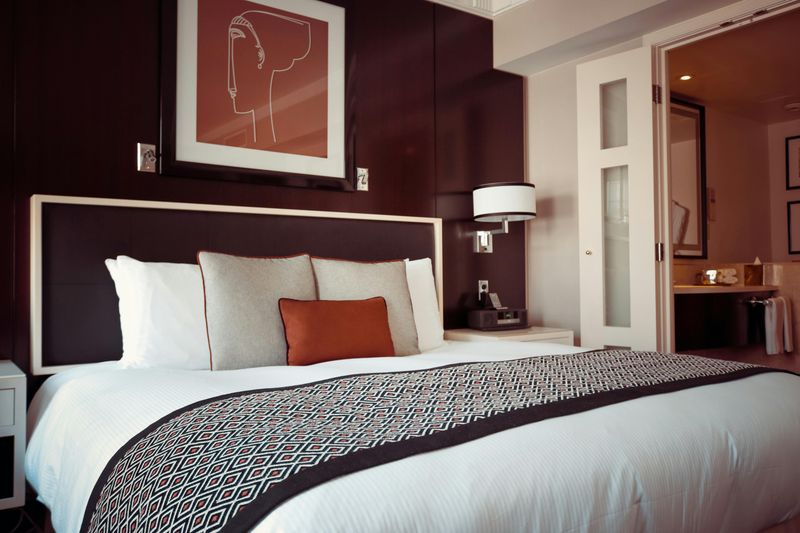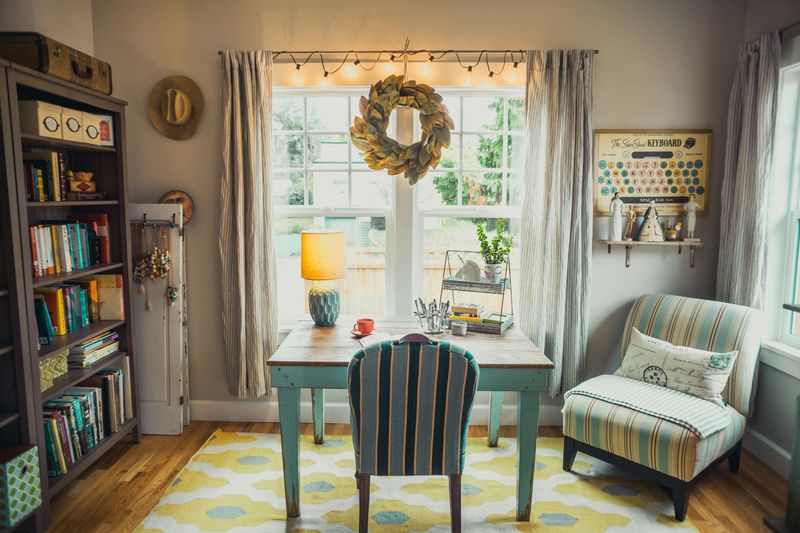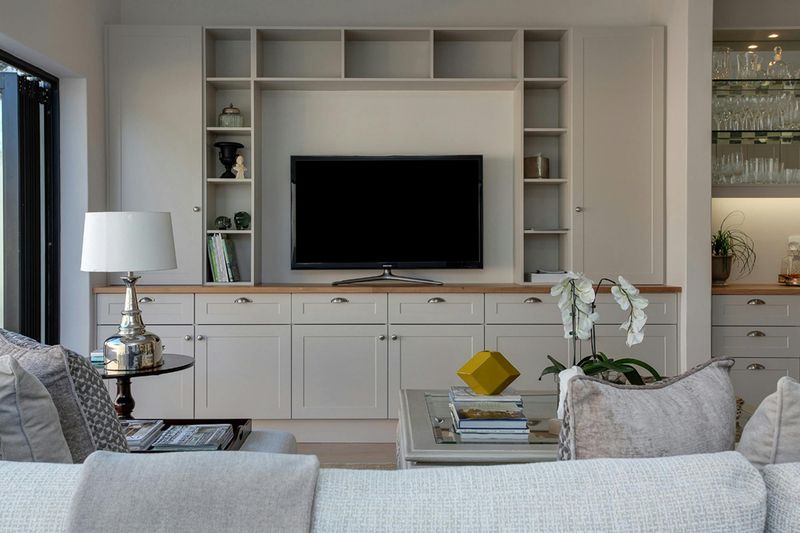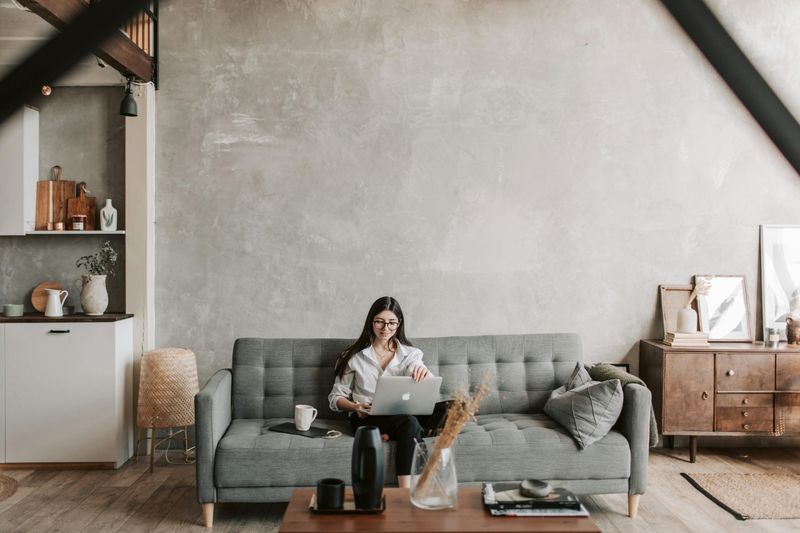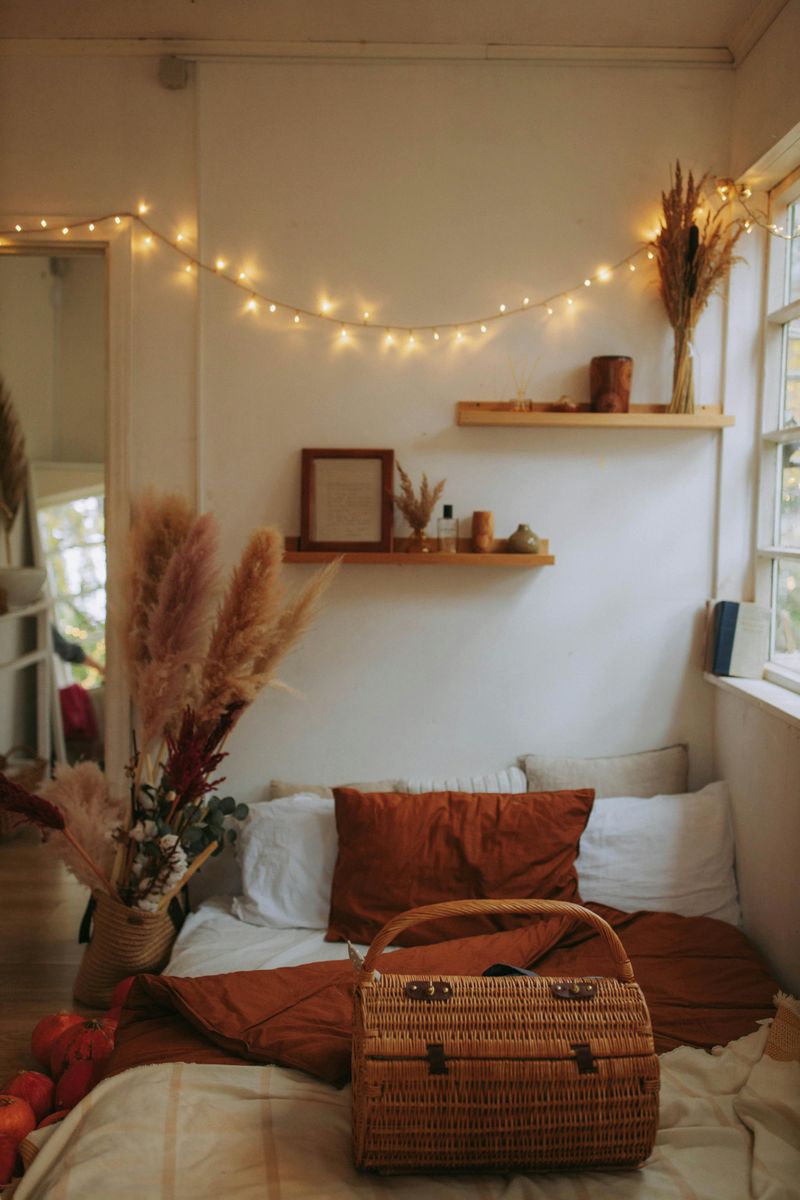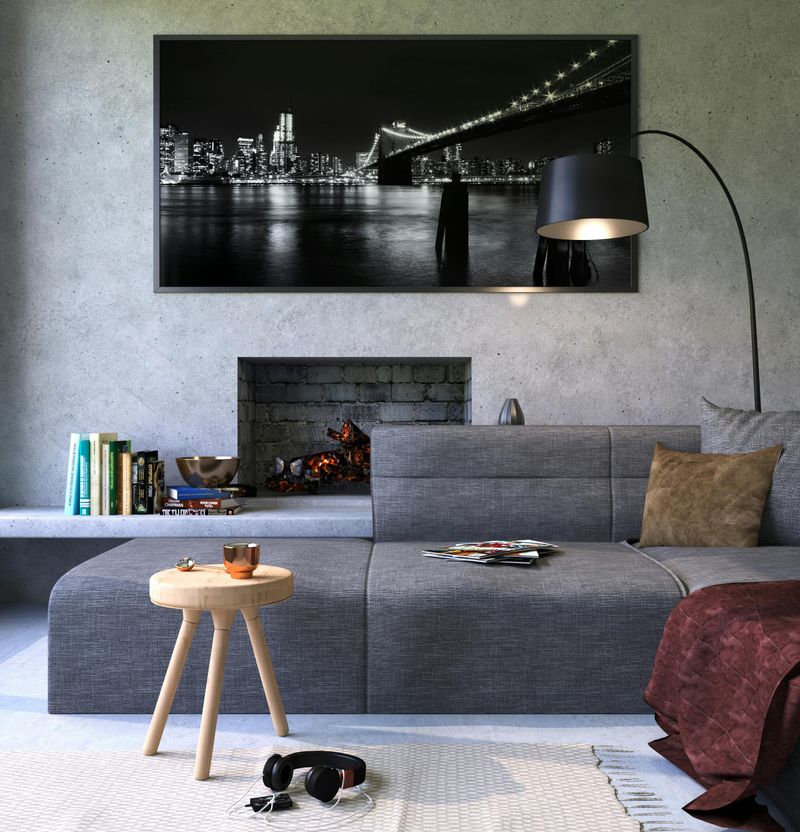Ever walked into someone’s house and thought, ‘Wow, they really have it all figured out’? The secret isn’t that they’re actually more organized or successful than you – they’ve just mastered a few simple home decor tricks. These visual shortcuts create the illusion of a perfectly put-together life, even when your actual to-do list is overflowing. With these 15 easy upgrades, you can fake it ’til you make it in the home department!
1. Matching Hangers
Nothing screams ‘chaos’ like a closet full of mismatched wire, plastic, and wooden hangers fighting for space. Swapping them for a single style creates instant visual harmony that looks deliberately designed rather than accidentally accumulated.
The transformation is immediate and dramatic. Your clothes hang at the same height, creating clean lines that make even budget fashion look more expensive. Plus, your morning routine becomes smoother when everything is properly displayed.
You don’t need fancy boutique hangers, either. Even basic plastic ones in a consistent color make a stunning difference for less than $20 total.
2. Statement Lighting
A single eye-catching light fixture can transform an ordinary room into a magazine-worthy space. Lighting is the jewelry of a room – it adds personality while creating ambiance that flatters everything else.
Guests naturally look up when entering a space, making ceiling fixtures particularly powerful first-impression makers. Even when surrounded by IKEA furniture, a striking pendant light or modern chandelier suggests thoughtful design choices.
3. Layered Rugs
Rug layering is the secret weapon of interior designers everywhere. Placing a smaller statement rug atop a larger neutral one instantly adds depth, texture, and a sense of intentional design to any room.
This technique works magic in rental properties with unattractive flooring. The base layer covers unsightly areas while the top layer introduces personality. Mixing patterns (like geometric over natural fibers) or textures (like sheepskin over flat-weave) creates visual interest that suggests decorating confidence.
4. Clear Surfaces
The fastest route to a visually peaceful home is keeping horizontal surfaces mostly empty. Cluttered countertops broadcast stress and disorganization, while clear spaces signal control and intentionality.
Start with kitchen counters, keeping only daily essentials visible. For desks and tables, adopt the rule of three: limit decorative items to three carefully chosen pieces that bring joy. Even budget furniture looks more expensive when not buried under random items.
The psychological effect is powerful too. Walking into rooms with breathing space creates a sense of calm that influences how others perceive both your home and your life management skills.
5. Strategic Greenery
Plants are magical problem-solvers in home decor. That awkward empty corner? Fill it with a tall fiddle leaf fig. Boring tabletop? Add a small succulent arrangement. Empty wall? Hanging plants create instant interest.
Even artificial plants (high-quality ones) can transform spaces when you’re not blessed with a green thumb. The key is strategic placement where they’ll have maximum impact – near entryways, as table centerpieces, or alongside seating areas.
Beyond aesthetics, plants suggest nurturing capabilities. Someone who keeps plants alive projects responsibility and care – even if you’ve secretly replaced that struggling fern three times this year.
6. Eye-Level Art
Properly hung artwork instantly elevates a space from college-dorm to grown-up home. The professional standard? Center pieces at eye level (approximately 57-60 inches from the floor to the middle of the art).
Amateur decorators often hang art too high, creating visual disconnect. When properly positioned, even inexpensive prints look deliberately chosen rather than haphazardly placed. Gallery walls should follow the same principle, with the collection’s center at eye level.
Frame choice matters too. Simple black frames create cohesion across different pieces, making random vacation photos look like a curated collection. This small adjustment makes your entire home feel more thoughtfully designed.
7. Decorative Trays
Corralling small items on stylish trays transforms everyday clutter into intentional vignettes. Remote controls, candles, and miscellaneous items that would look messy scattered across surfaces suddenly appear curated when grouped together.
Coffee tables especially benefit from this trick. A tray with a candle, small plant, and coffee table book creates a magazine-worthy centerpiece in seconds. In bathrooms, everyday toiletries look luxurious when arranged on a marble or metallic tray rather than cluttering the counter.
This technique works because it creates boundaries. Items contained within a defined space appear deliberately arranged rather than randomly abandoned, suggesting organizational skills you might not actually possess!
8. Mirror Magic
Strategic mirror placement is like a magic trick for small or dark spaces. Positioned opposite windows, mirrors bounce natural light throughout the room, creating the illusion of more square footage and brightness.
Oversized floor mirrors leaned against walls add dramatic flair while making ceilings appear higher. Even budget apartments look more luxurious with this one addition. For maximum impact, choose mirrors with slim frames in metallics or classic wood tones.
Beyond practical benefits, well-placed mirrors suggest design knowledge. They demonstrate understanding of light, space, and proportion – even if you just thought the mirror looked cool in that spot!
9. Color Coordination
Matching accent colors across a room creates instant cohesion that looks professionally designed. The trick isn’t matching everything perfectly – it’s repeating colors in strategic places to create visual connections.
Pick three complementary colors and incorporate them throughout your space. A blue throw pillow connects to a blue vase, which connects to a blue book spine. This repetition creates a rhythm that feels intentional rather than accidental.
Even mismatched furniture looks curated when tied together with consistent accent colors. This approach is particularly effective in open-concept spaces where color repetition helps define areas while maintaining visual flow between them.
10. Quality Bedding
Nothing says ‘I have my life together’ like a beautifully made bed with quality linens. The bedroom instantly transforms from chaotic crash pad to sophisticated sanctuary with this single upgrade.
The secret isn’t spending a fortune – it’s layering textures and ensuring everything looks intentionally chosen. Start with crisp white sheets (they feel hotel-luxurious even at budget price points). Add a neutral duvet or comforter, then layer with throws and pillows in complementary colors.
Make this the one area you maintain daily. A perfectly made bed creates the psychological impression of organization and discipline, even when the rest of your life feels anything but orderly!
11. Organized Shelving
Bookshelves reveal more about our organizational skills than perhaps any other area of our homes. Random stacking suggests chaos, while thoughtful arrangement implies control and aesthetic awareness.
Color-coordinating books creates an instant art installation from items you already own. For a more subtle approach, organize by size with the tallest on the ends, creating pleasing symmetry. Leave breathing room rather than cramming shelves full – negative space is as important as the objects themselves.
Mix books with decorative objects for visual interest, but follow the rule of thirds: books should occupy roughly two-thirds of shelf space, with decorative items filling the remaining third.
12. Hidden Cords
Tangled cords instantly undermine an otherwise polished space. They’re visual noise that signals disorder, no matter how carefully you’ve arranged everything else.
Cable management doesn’t require complicated solutions. Simple cord covers painted to match walls, fabric cord concealers, or even strategic furniture placement can hide electronic chaos. For entertainment centers, invest in a simple cord management box that keeps power strips and excess wiring contained.
This small detail makes a dramatic difference in how put-together a room appears. Visitors might not consciously notice the absence of cords, but they’ll unconsciously register the clean, intentional look of surfaces free from technological spaghetti.
13. Signature Scent
A home with a pleasant, consistent fragrance creates an immediate impression of cleanliness and attention to detail. The olfactory experience is powerful yet often overlooked in home presentation.
Choose one signature scent family (citrus, woody, floral) and use it throughout your space. Candles, diffusers, and room sprays in complementary fragrances create a cohesive sensory experience. Avoid competing scents that create olfactory confusion.
The psychological impact is significant. A thoughtfully scented home suggests regular cleaning and maintenance, even when you’ve actually just lit a candle to mask yesterday’s cooking odors! This multisensory approach to home presentation elevates your space beyond purely visual impressions.
14. Seasonal Rotation
Homes that feel perpetually fresh and intentional often employ a simple secret: seasonal decor rotation. This doesn’t mean holiday-themed items, but rather subtle texture and color adjustments that reflect the changing year.
Lightweight linens and bright accents in summer give way to chunky knits and deeper tones in fall. Simple swaps like changing throw pillow covers, table runners, or mantel arrangements signal attentiveness to your environment. Keep a small storage box for each season with appropriate accent pieces.
15. Furniture Anchoring
Floating furniture makes rooms feel disjointed and temporary. The pro move? Anchor seating arrangements with area rugs and coffee tables to create defined conversation zones that feel intentionally designed.
The right-sized rug should extend beyond furniture edges, allowing at least the front legs of all seating pieces to rest on it. This creates visual boundaries that make even mismatched furniture look like deliberate collections. Coffee tables act as functional centerpieces, providing both practical surface area and visual weight.
This approach transforms spaces from feeling like random furniture storage to purposeful living areas. It’s particularly effective in open-concept homes where defined zones create necessary structure without walls.


